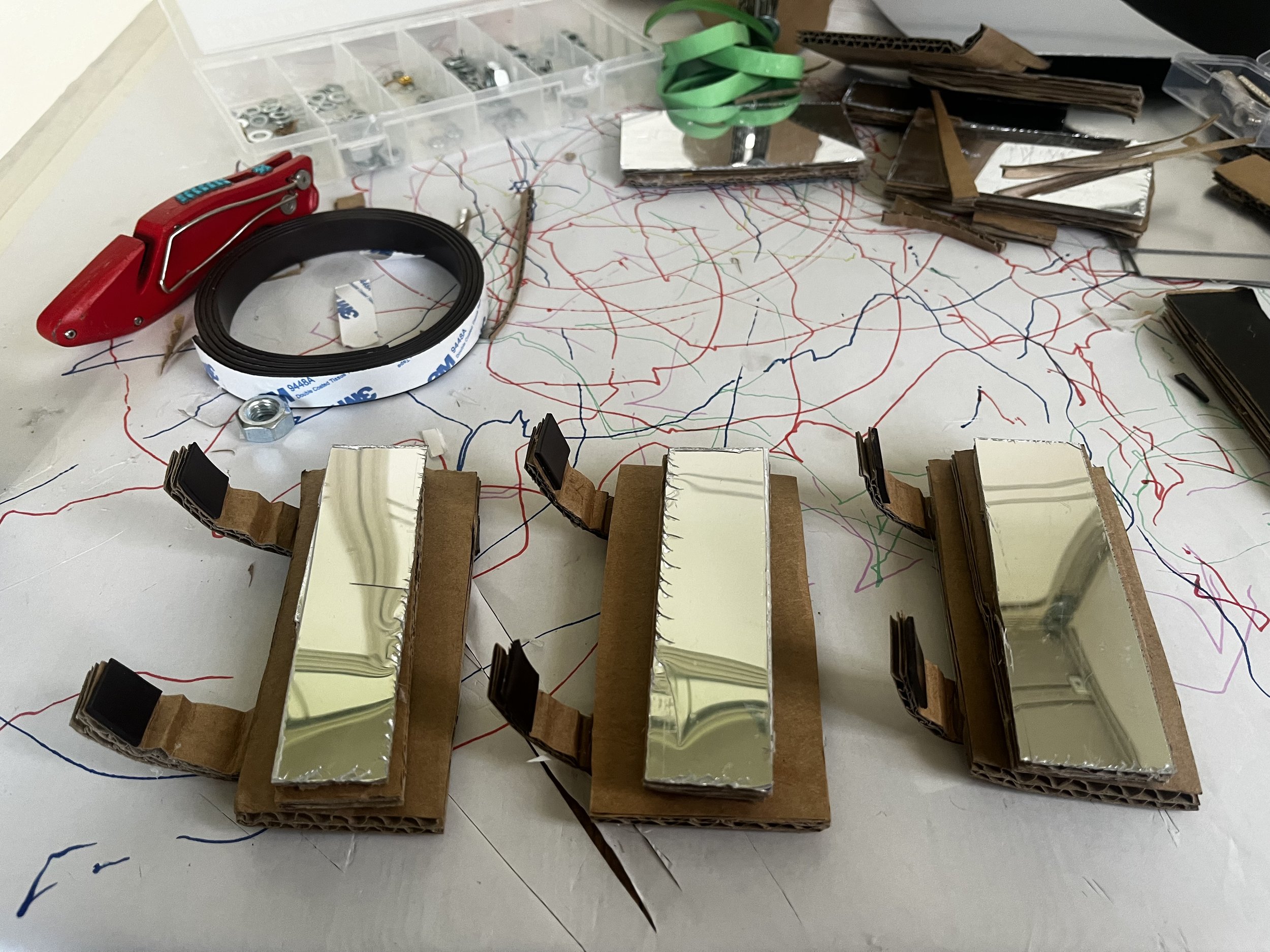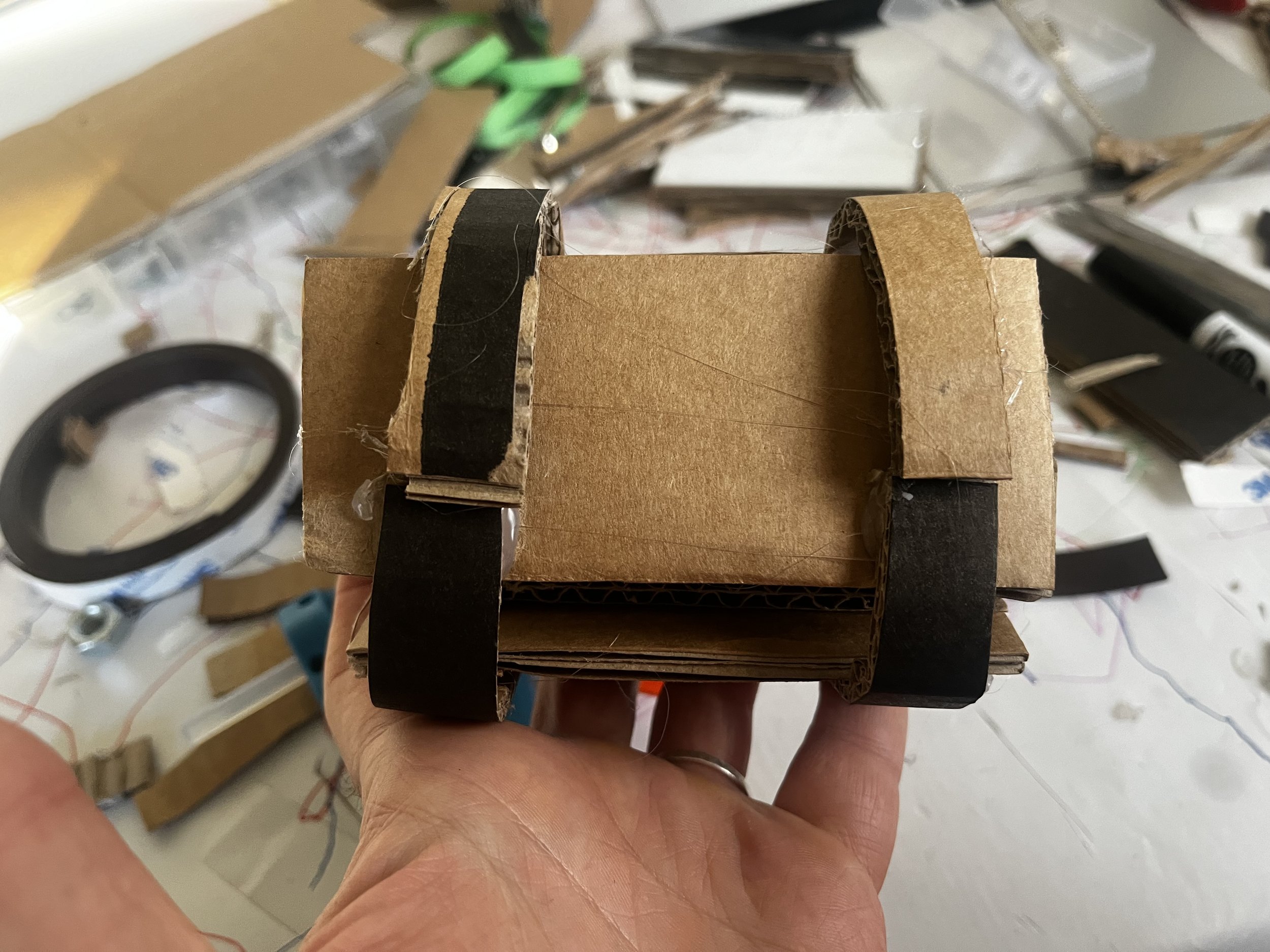Iterative Kaleidoscope Building Ideas
Over the last months I’ve been working alongside colleagues from the LEGO Playful Museum Learning Network to create tinkering inventive playsets that allow learners to explore ideas around kaleidoscopes. Some of the prototypes so far have focused on examining everyday objects on a motorized platform, making things more collaborative and adding in digital elements.
Another idea that I’ve been messing around with is the idea of just having a bunch of loose mirrored and black shapes (rectangles of different sizes, tapered trapezoids and parts with little cut outs) and letting people make and remake their own designs. For now I’m using cardboard pieces with mirrored cardstock but eventually these parts could be more robust with wood or acrylic components.
One of the challenges of this set up is how the parts can be easily built and taken apart quickly to support iteration of ideas. With a more facilitated “make and take” kaleidoscope activity we’ve used masking tape but I feel that in this an open table in a museum or library that would create too much mess and be too intimidating to take apart already completed designs. Here are a couple options that we’re trying out:
The first option that I tested was rubber bands that could fit around the outside. This has some advantages in that it’s pretty intuitive to understand how to fit the parts together and it’s easy to collect different sized rubber bands to wrap around various shapes. A challenge could be that for younger learners the rubber bands are a little tricky to stretch out around the forms.
Another variation on this idea would be to make cardboard sleeves for the parts to fit inside. This is a little bit easier to fit the shapes inside the sleeve but a bit more inflexible with different shapes. A tapered shape might need a big and small tube which may not be obvious at first glance.
Another idea that I wanted to try is magnetic elements. I was inspired by Nick at the Connecticut Science Center who has been experimenting with adapted Magna-Tiles toy parts. One version that I tried at first was to have washers glued to one side of the shape and magnets to the other. This worked well and had the added advantage of being able to flip the parts that had reflective surface on one side and a dark color on the other. One thing that was tricky about this system was that it was hard to make really clean edges which is necessary to keep the sharp kaleidoscope effect.
One way that I thought to address this is by making more complicated pieces with magnet straps and the mirrored surface on a bit of a extended platform. There may be something to this design but the first prototype didn’t work too well and I think would be too challenging to use.
Some other options that I want to over the next days and weeks are velcro wraps, interlocking teeth or bristles as well as other arrangements of magnet parts. It would also be cool to try to find a universal system to add lenses, eyepieces and phone holders to the designs. We’ll be testing things in the workshop and trying out designs with learners in the near future and will report back about what we learn.
The LEGO Playful Learning Museum Network initiative is made possible through generous support from the LEGO Group.










